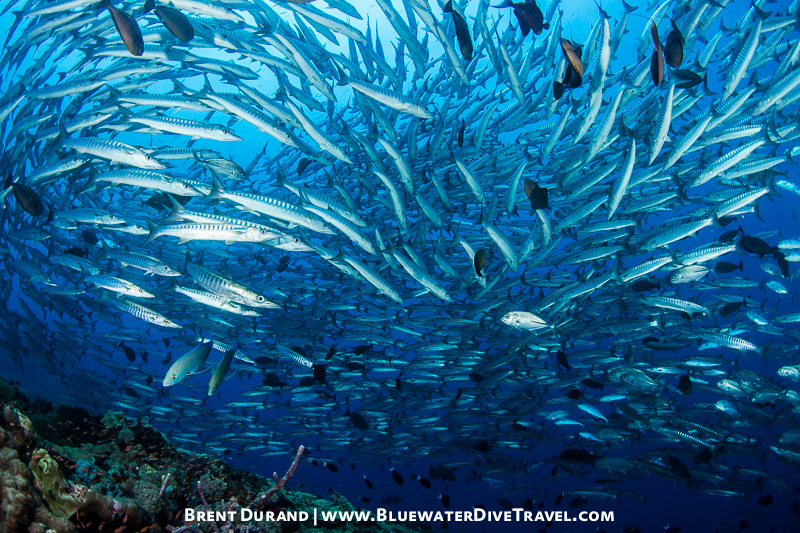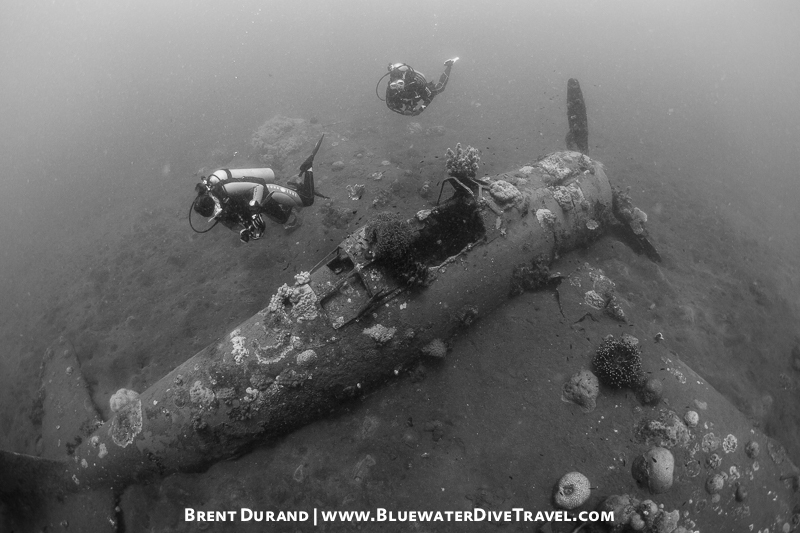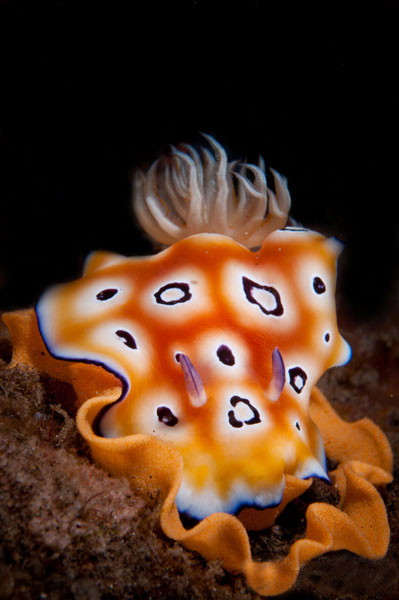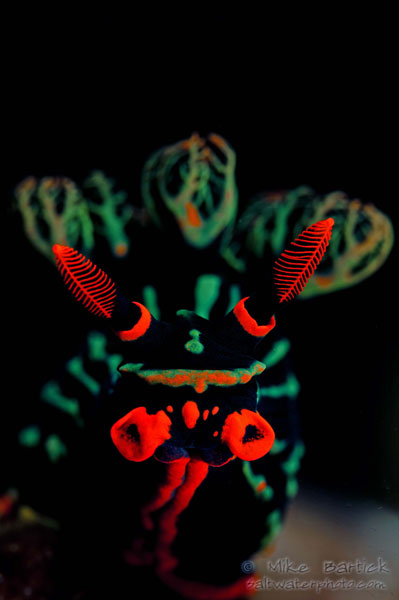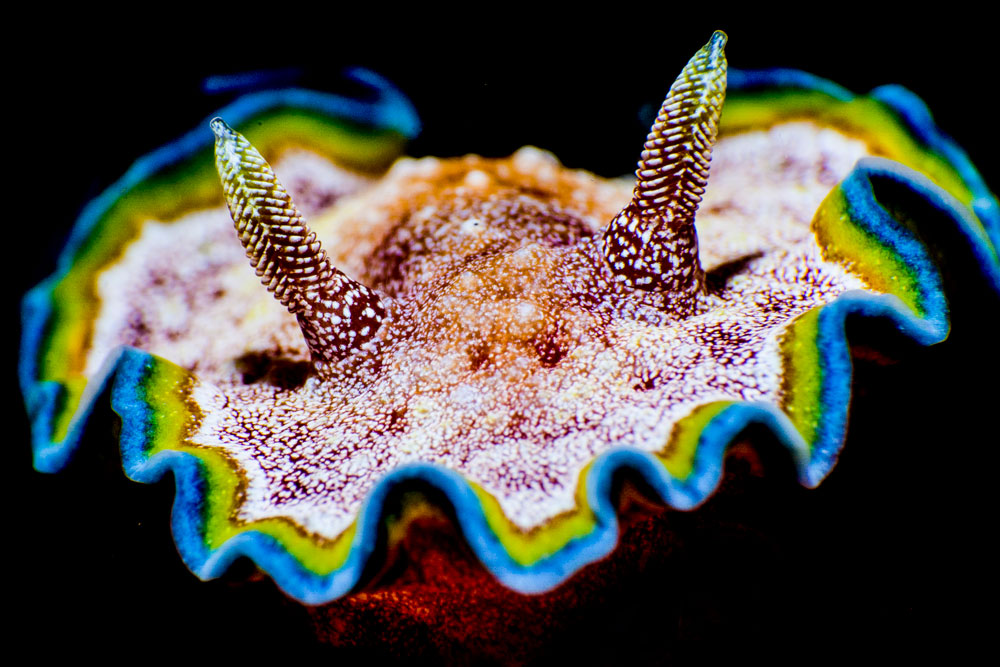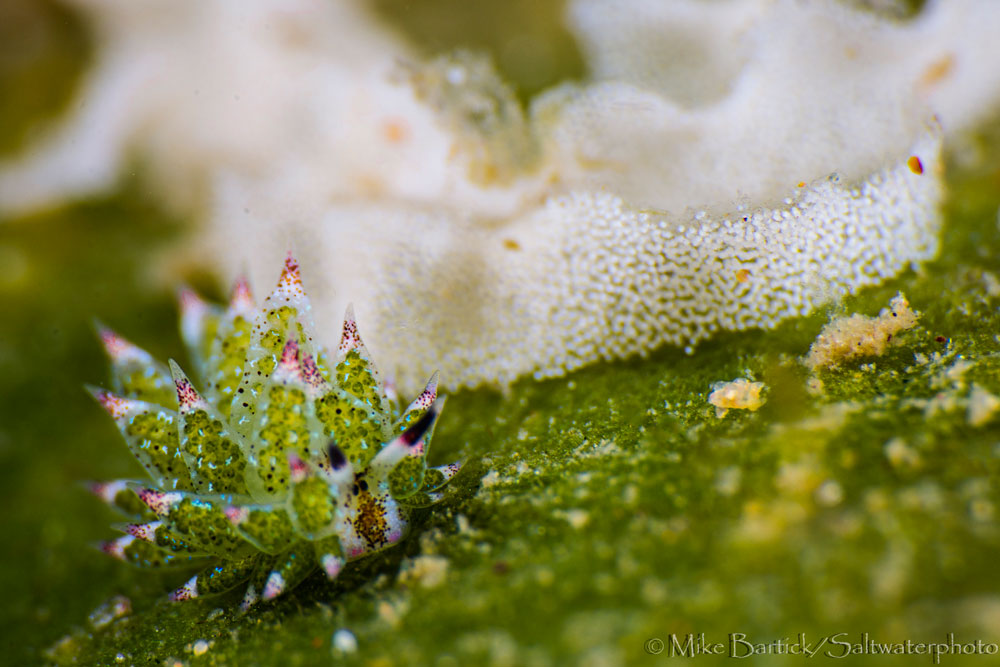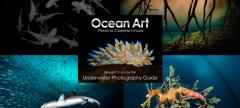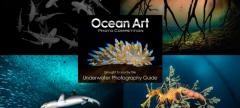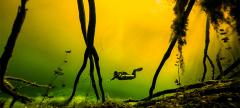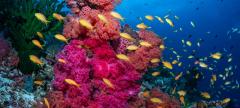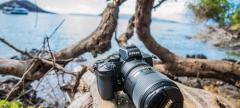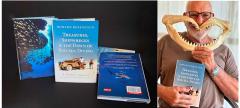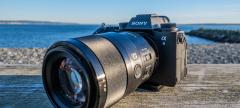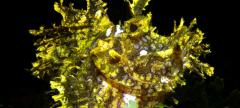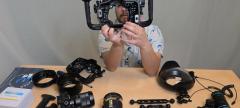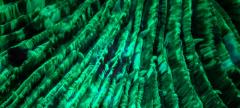Newsletter Signup
Click here to sign up for our Newsletter
Tips, tutorials, news, reviews, upcoming workshops, and more!
- Guide for Beginners
- Underwater Photography Equipment
- Equipment Photos
- Camera Body Basics
- Camera Selection Guide
- Nikon D7100 camera review & features
- Canon 5D MK III specs and comparison
- Canon 5D Mark III Review
- Nikon D800 specs and comparison
- First Impressions: Nikon D800 and Ikelite housing
- Nikon D600 / Sea & Sea Housing Review - Wide-Angle
- Nikon D600 / Sea & Sea Housing Review - Macro
- Nikon Announces Full Frame D600
- Canon Announces EOS 70D
- Canon 70D Review for Underwater Video
- Olympus OM-D E-M1 In Depth Review
- Olympus OM-D E-M5 Camera Review
- Nikon Announces D810 Camera
- Sony RX-100 III Review for Underwater Photos
- Sony RX-100 review
- 4K Underwater Video with the Panasonic GH4
- Best Compact Cameras of Summer 2016
- Best Underwater Cinema Cameras
- Blackmagic Pocket Cinema Camera 6K Pro: Initial Thoughts & Review
- Blackmagic Pocket Cinema Camera 6K: First Look and Review
- Canon 1DX Mark III: First Look & Review
- Canon 5D Mark IV Review
- Canon 5D Mk IV Underwater Video Review
- Canon 5Ds Review plus 5D Mark III Comparison
- Canon 6D Mark II Camera Review
- Canon 7D Mark II Review for Underwater Photography
- Canon 80D Review for Underwater Photo & Video
- Canon Announces EOS 7D Mark II DSLR
- Canon Announces EOS-1D X Mark II DSLR
- Canon EOS M5 Preview
- Canon EOS R Review
- Canon EOS R1 Review and Initial Thoughts
- Canon EOS R10 Review
- Canon EOS R3 Initial Review
- Canon EOS R5 Mark II Review
- Canon EOS R5 Review
- Canon EOS R50: Initial Thoughts & Review
- Canon EOS R5C: Initial Thoughts & Review
- Canon EOS R6 Mark II Review
- Canon EOS R6 Review
- Canon EOS R7 & Canon EOS R10: Initial Thoughts & Review
- Canon EOS R7 Review
- Canon EOS R8 Review
- Canon G7 X Mark II Camera Review
- Canon G7X Mark III Review
- Canon R100 Review
- Coldwater Diving with the Paralenz
- DiveVolk SeaTouch 4 Max Smartphone Housing Review
- First Look at the Canon G9X Mark II
- Fujifilm X-T3: Taking Fujifilm Underwater
- GoPro HERO 11: Initial Thoughts & Review
- GoPro HERO10 Underwater Review
- GoPro HERO5 Review for Underwater
- GoPro Hero 6 Review
- GoPro Hero 7 Underwater Camera Review
- GoPro Hero 8 Underwater Review
- GoPro Hero9 Black Review
- GoPro Introduces the Hero 3+
- Google Pixel Announces "Capture the Seas" Feature with Kraken Universal Smart Phone Housing
- Insta360 GO 2 Packs Flagship Power into the World’s Smallest Action Camera
- Insta360 One R Underwater Review
- Nikon D500 Review with Sea & Sea MDX-D500 Housing
- Nikon D7200 DSLR Camera Preview
- Nikon D7500 Camera Preview
- Nikon D780 Review
- Nikon D850 Review
- Nikon D850 First Underwater Impressions
- Nikon Z30: Initial Thoughts & Review
- Nikon Z6III Review
- Nikon Z7 and Z6 Camera Review
- Nikon Z7II & Z6II Review
- Nikon Z8 Review
- Nikon Z9: Initial Thoughts & Review
- OM System TG-7 Review
- OM systems OM-5 Initial Thoughts and Review
- Olympus Announces PEN-F Camera
- Olympus OM System OM-1 Camera Review
- Olympus OM-D E-M1 Mark II Review
- Olympus OM-D E-M1 Mark III Review
- Olympus OM-D E-M10 Mark II Announced
- Olympus OM-D E-M1X: Initial Thoughts and Review
- Olympus OM-D E-M5 Mark II Announced
- Olympus OM-D E-M5 Mark II Camera Review
- Olympus OM-D E-M5 Mark III Review
- Olympus PEN E-PL8 Preview
- Olympus TG-5 and TG-6 Underwater Settings
- Olympus TG-6 Review
- Olympus Tough TG-4 Review
- Olympus Tough TG-5 Camera Review
- Panasonic GH5S Underwater Video
- Panasonic GH6 Review
- Panasonic GH7 Review and Initial Thoughts
- Panasonic Lumix S1H First Look & Review
- Panasonic S Series: First Look & Review
- Panasonic S5II and S5IIX: Initial Thoughts & Review
- Paralenz Dive Camera Review
- Review: Canon 5D MK IV in Aquatica Housing
- Review: Canon 5D Mk IV with Ikelite Dry Lock Port System
- Sea & Sea DX-6G Camera and Housing Review
- SeaLife Micro 2.0 Camera Review
- SeaLife Micro 3.0 Review
- SeaLife SportDiver Smartphone Housing Review
- Shooting Stills with the Panasonic GH4
- Sony A1 II Review and Initial Thoughts
- Sony A1 Review
- Sony A6700 Review
- Sony A7 IV Review
- Sony A7C II Review
- Sony A7C R Underwater Review
- Sony A7R III Camera Review
- Sony A7R IV Review
- Sony A7R V Review
- Sony A9 III Review
- Sony A9 III Underwater Settings
- Sony RX100 IV Review
- Sony RX100 V and VA Review
- Sony RX100 VA (RX100M5A) Announced
- Sony RX100 VI Underwater Camera Review
- Sony RX100 VII Review
- Sony ZV-E1: Initial Thoughts & Review
- Sony a6100 Review
- Sony a6300 Mirrorless Camera Review
- Sony a6400 Camera Review
- Sony a6500 Camera Review
- Sony a6600 Underwater: First Look & Review
- Sony a7C: Initial Thoughts & Review
- Sony a7R II Camera Review
- The Newest Underwater Photo & Video Gear in 2024
- The Nikon D850 vs the Sony A7R III for Underwater Photography
- The Paralenz Vaquita Has Been Announced!
- The Sony FX3 Underwater Review & Housings
- Top Ten Underwater Cameras
- Top Underwater Cameras for Kids
- What's New at DEMA 2022
- Why Smartphones Could be the Future of Underwater Photo and Video
- Recsea Canon G15 Housing & Macro Review
- Sony Unveils World's First Full-Frame Mirrorless Cameras
- Canon G1X Review
- Canon S100 First Impressions
- Canon S100: In-Depth Thoughts And Housing Reviews
- Customer Review: Sony NEX 7 and Nauticam NA-NEX 7 Housing
- First Impressions: Panasonic GX1 Mirrorless Camera
- First Impressions: Using The Olympus E-PM1 Underwater
- New Canon T3 and T3i Camera Announced
- Olympus E-PL1 Review
- Olympus E-PL3 and E-PM1 Camera Review
- Olympus Pen E-PL2 Camera Announced
- Olympus XZ-1 Review
- Sea & Sea DX-2G Camera Review
- Camera Review: Canon 7D - First Impressions
- Canon SD4000 camera review
- Nikon P7000 camera
- SeaLife DC1400 Review
- Sony A77 DSLR Pre-review
- Top 5 Underwater Cameras for Christmas 2012
- Underwater Camera Housings
- Aquatica A5D MkIII Housing Review
- Ikelite 5D Mark 3 Housing Review
- Aquatica Housing for Nikon D7100
- Housing Review: Nauticam NA-D7100
- Sea & Sea MDX-D7100 Housing Review
- Ikelite D7100 Housing Released
- Nauticam Housing for Canon 70D
- Ikelite Housing for Canon EOS 70D
- Aquatica A70D Housing Announced
- Nauticam Housing for Canon 6D
- SEA&SEA Housing for Canon 6D
- Nauticam Housing for Sony RX-100 II
- Fantasea FG16 Housing Released
- Fantasea's FG15 in the Lab & the Water
- An Interview with Seacam Founder, Harald Hordosch
- Acquapazza Sony A6300 Housing Overview
- Aquatica A5Dsr Housing Announced
- Aquatica A6500 Housing Announced
- Aquatica A7D Mk II Housing
- Aquatica AGH4: 4K Cinema in Micro 4/3 Housing Line
- Aquatica Canon 1D X MkII Housing Preview
- Aquatica Canon 5D Mark IV Housing Overview
- Aquatica Nikon AD500 Housing Overview
- Aquatica Sony A6300 Housing Overview
- Aquatica Sony A7R II Housing Review
- Aquatica a7r II Housing Announced
- Best Underwater Housing Brands
- Canon SL3 Review: World's Smallest Underwater DSLR
- Fantasea Canon G7XII Housing Review
- Fantasea Canon G9 X Housing Review
- Fantasea FA6500 Housing Review
- Fantasea FRX100 IV Housing Review
- Fantasea Line FG16 Housing Review
- Fantasea Sony RX100 IV Housing Released
- Fantasea Sony a6400 Underwater Housing Review
- Fantasea Sony a6500 and a6300 Housing Announced
- Ikelite 7D Mark II Underwater Housing
- Ikelite Canon 7D Mark II Housing Review
- Ikelite Canon EOS R5 Housing Review
- Ikelite Canon SL1 Housing Released
- Ikelite D810 Housing
- Ikelite Housing for Sony RX100 III
- Ikelite Housings for Nikon D500 Overview
- Ikelite Sony a6300 Housing Available to Pre-Order
- Ikelite Sony a6400 Underwater Housing Review
- Ikelite Z6/Z7 Underwater Camera Housing Review
- Introducing the Mantis Sub Underwater VR Housing
- Isotta Underwater Housings
- Kraken Smartphone Housing Review (KRH08 & KRH07)
- Mantis Sub RS 360 Underwater Review
- Marelux Atomos Ninja V Housing Review
- Marelux Underwater Housings: A New Brand at Bluewater Photo
- Nauticam Announces Sony RX100 IV Housing
- Nauticam Canon G7X II Housing Available
- Nauticam D810 Housing
- Nauticam D850 Review
- Nauticam Housing for Canon 60D
- Nauticam Housing for Panasonic GH4
- Nauticam NA-7DMKII Housing Review
- Nauticam NA-G7X Housing
- Nauticam Nikon D500 Housing Available
- Nauticam Olympus OM-D E-M5 II Housing
- Nauticam RX-100 III Housing Specs & Review
- Nauticam Sony A7 II Housing Announced
- Nauticam Sony A7R III Housing Mini Review
- Olympus E-M1 Housing Guide
- Photographing Cenotes with the Marelux Z9 Housing and Marelux Apollo III Strobes
- Salted Line Sony A6xxx Series Underwater Housing Review
- Sea & Sea 5D Mark IV Underwater Housing Preview
- Sea & Sea Canon EOS R Underwater Housing Review
- Sea & Sea Canon EOS R5 Housing Review
- Sea & Sea MDX-7DMKII Housing Announced
- Sea & Sea MDX-D500 Underwater Housing Overview
- Sea & Sea Sony Universal Housing Review
- Sony A1 Underwater Housings
- Sony RX100 IV Housing Guide
- Taking the Fantasea RX100 III Housing Underwater
- Canon S90 Underwater Housings
- Aquatica Enters Micro 4/3 Housing Category
- Nauticam Housing for Panasonic GX7
- Nauticam OM-D E-M5 underwater housing
- Sea & Sea MDX-70D Housing Announced
- 10 Bar Panasonic Lumix GH-3 Housing
- Nexus Underwater Housings
- RecSea Canon S95 Underwater Housing
- Ikelite housings
- Aquatica Housing for Canon 7D
- Nauticam D90 Underwater Housing
- Review on Sea & Sea MDX-D300 underwater housing for Nikon D300
- Nauticam Viewfinder
- Best Lenses for Underwater Photography
- Best Micro-four lenses for underwater photography
- Canon 100mm Macro Lens Underwater Photos
- Canon EF 8-15mm f/4L Fisheye USM Review
- Canon RF 100mm f/2.8 Macro Lens Review
- Canon RF 14-35mm f/4 Lens Review
- Choosing a macro lens 60mm or 100/105mm
- First Shots With the Nikon Z 7II & Z mount Lens Review
- Introducing the Nauticam Super Macro Converter SMC
- Laowa 24mm f/14 2X Macro Probe Review
- Lens Review: Dyron Double Macro M77
- Macro Lenses For Underwater Photography
- New Nikon & Canon Mirrorless Macro Lenses for Underwater Photography
- Nikon 8-15mm f3.5-4.5 Full Frame Fisheye Lens Pre-Review
- Nikon Z 105mm Macro Lens Review
- Nikon Z 14-30mm f/4 Wide Angle Lens Review
- Olympus 60mm macro lens review for underwater photographers
- Olympus 9-18mm Lens Review
- Panasonic 8mm Fisheye Lens Review
- Photos & Overview: Canon 100mm f/2.8L Macro Lens
- Sigma 15mm and Tokina fisheye on full-frame cameras
- The Best Sony Wide Angle Lens for Underwater Photography & Video
- Wet Lenses
- Fantasea UWL-400F Wide Angle Wet Lens Review
- Guide to Fantasea AOI Wet Lenses
- In Review: Fantasea UWL-09F Ultra Wide Angle Wet Lens
- Kraken KRL-09S Wide Angle Conversion Lens Review
- Kraken KRL-11/12 Compact Wide Angle Wet Lens Review
- Kraken Sports KRL-01 Wet Wide Angle Lens Review
- Saga Magic Tube Review
- Review of the Nikon 105mm VR Macro Lens
- Tokina 10-17mm Fisheye Lens
- Sigma 8-16mm lens
- Underwater Strobes
- Sea & Sea YS-D1 Strobe Review
- Inon Z240 Review
- Sea & Sea Optical YS Converter
- Strobe comparison - Sea & Sea YS-110 vs Inon Z240
- Using a Ring-Flash for Underwater Photography
- How to Fire Your Underwater Strobes
- Ikelite DS 230 Strobe Review
- Inon Z330 Strobe - a Photographer's Review
- Kraken KR-S02 Strobe Review
- Kraken KS-160 Strobe Review
- Marelux Apollo III Underwater Strobe Review
- Marelux Smart Optical Flash Tube (SOFT) Snoot Review
- Retra Flash Underwater First Impressions
- SEA&SEA YS-D2 vs YS-D1 Strobe Comparison
- Scubalamp D-Pro Underwater Strobe Review
- Sea & Sea YS-D3 Duo Review
- Sea & Sea YS-D3 Strobe Review
- Sea Dragon Lighting System Review
- Sea&Sea YS-D2 Strobe Review
- SeaLife Sea Dragon Flash Review
- Snoot Review and Comparison
- iDiveSite Symbiosis SS3 Strobe and Video Light Review
- Dome Ports and Macro Ports
- Dome Ports and Wide-Angle Optics
- Video & Focus Lights
- How To Charge Your Sola Dive Light
- I-Torch Venom38 Video Light Review
- Kraken 1000 FE Focus Light Review - with Snoot & Color Filters
- Kraken Hydra 15000 WRGBU Video Light Review
- Kraken Hydra 2500 Macro Light Review
- Kraken Hydra 4000 & 6000 WRGBU Video Light Review
- Kraken LTD 7000 Underwater Video Light Review
- Kraken Solar Flare Mini 15,000 Underwater Video
- Kraken Solar Flare Mini 15000 Review
- Kraken Sports 2500 V2 Video Light Review
- Kraken Sports Hydra 8000 Underwater Video Light Review
- Kraken Sports Weefine Ring Light Review
- Kraken Video Lights
- Kraken Weefine Ring Light 3000 Review
- Light & Motion Expands The SOLA Series
- Light & Motion GoBe Light Review
- Litra and Paralenz Underwater Timelapse and Video
- New and Improved Kraken Sports Hydra Lights
- SeaLife Sea Dragon 5000+ Underwater Video Light Review
- Sealife Sea Dragon 2000 Lumen Video Light Review
- Sola Video Pro Lights Initial Thoughts
- The Best Focus Lights
- The Best Underwater Snoot Video Light
- Understanding Underwater Video Lights
- Venom 60 RGB Video Light Review
- Other Underwater Gear & Equipment
- Review: Sola Nightsea UV Light
- 9 Hot Items We Can't Wait To See In 2013
- Apple's new Macbook Pro
- Batteries: Put to the Test
- Get a Handle on your Housing
- Lexar 128GB SDXC Memory Card Now Available
- Night Diving in a New (UV) Light
- Using the Right Arms and Clamps
- Batteries and Chargers
- Fluoro Diving
- How to Choose a Memory Card
- Kraken 5.5" Underwater Monitor Review
- Kraken 7" Ultra Bright HDMI Monitor Review
- Nauticam & Isotta Housings Are Compatible with Ikelite TTL!
- Nauticam SMC + Multiplier vs. SubSee 10 + 5
- Nauticam SMC Review
- Olympus TG-6 Wide Angle Photography: FCON-T02 Fisheye Lens
- The Easiest Underwater Fluorescence Photography Kit
- TTL Converter Options
- Checklist and Cost of Equipment
- Best GoPro Hero 7 and 8 Underwater Settings
- Settings & Technical Info
- Best Underwater Settings for Olympus OM-D E-M5 Mark II Camera
- Canon EOS R5 Underwater Settings
- Canon G7X II Best Settings
- Getting To Know Your Camera's Image Quality Formats
- Olympus OM-D and PEN underwater settings
- Panasonic LX100 Settings for Underwater Video
- Sony a7R II Best Video Settings for Underwater
- Top 5 Settings To Improve Your Underwater Photos
- Understanding Exposure
- Underwater Settings for Sony RX100 II & III & IV & V
- Utilizing Instant Recall Modes on your dSLR
- Aperture
- Shutter Speed
- Understanding ISO
- Underwater Camera Modes
- RAW versus JPEG
- Settings for Macro and Wide-Angle
- Canon S90/S95/S100 G11/G12 Settings
- Nikon D300 & D90 Underwater settings
- Ultimate Guide to Canon 7D Underwater Settings
- Underwater Photography Tutorial - Canon G11, G12
- Underwater Settings for the Sony RX 100
- When Auto is Better than Manual - S and A Modes
- Understanding your underwater camera settings
- Changing Settings on a dive
- Histograms
- Reciprocity and stops
- Technical Information
- Tutorials
- Macro Underwater Photography
- A Photographer's Guide to Muck Diving
- Bokeh
- Creative DIY Bokeh
- DSLR and TG-5: A New Level of Underwater Photography
- Essential Tips for Nudibranch Photography
- Five DSLR Life-hacks for Great Macro Photography
- How to Improve your Fish Portraits
- How to Shoot Stills with a Video Light
- Macro Methods: Sharp Eyes and Nice Bokeh
- Macro Wide Open
- Macro with a dome port
- Marelux SOFT Lite Snoot Review
- Nauticam EMWL (Extended Macro Wide Angle) Lens Review
- Photo Tips for Blackwater Diving
- Pushing the Limits of Macro with a Compact Camera
- The Art of Blackwater Photography
- The Quick Guide to Macro Composition
- Tips for Artistic Macro Shooting
- Tips for Shooting with Diopters
- Ultimate Guide to Snoot Photography
- Super macro Photography
- Wide-Angle Photography
- 3 Quick Tips for Dive Buddy Photos
- 9 Wide Angle Underwater Photography Tips
- Ambient Light
- Are You Playing to Win or Playing Not to Lose?
- Capturing Fast Ocean Action
- Fisheye Lens vs. Wide-Angle Lens
- Guide to Shooting Striking Sunbursts
- Ocean Art Wide-Angle Winner
- Shooting Tips: Canon 5D Mark IV in Poor Vis
- Shooting Tips: Sharks and Sunbursts
- Shooting from the Hip
- Shooting with a Dive Model
- Ten Amazing Photos You Can Take With A Fisheye Lens
- The Big Picture: Shooting Reefscapes
- Ultimate Guide to Photographing Sea Lions Up Close
- Whale Shark Photo & Video Tips
- Wide Angle Tutorial on the Oil Rigs
- Wide-Angle Photography in Low Light Conditions
- Wide-Angle Strobe Exposures
- Shooter's Toolbox: Balanced Light
- Image Sharpness
- Photographing Schools of Fish
- Underwater Models
- Post-processing & Photoshop
- 5 Easy Steps To Process Your Underwater Photos
- Adobe Lightroom 4 released, with video editing
- Color Filters vs. Post-Processing
- Cropping example
- Enhancing your Images with Photoshop
- How to Create a Fractal Image in Photoshop
- How to Remove Backscatter Quickly & Easily with Photoshop
- How to convert images to black & white
- Keeping Your Digital Images Safe
- Lessons on Copyright
- Lightroom 3 Adjustment Brush
- Lightroom CC vs Lightroom Classic
- Lightroom Lens Correction
- Lightroom Overview - Who and Why you should use Lightroom
- Lightroom Tips & Tricks: Crop Image Overlay Tool
- Lightroom Tips & Tricks: The Spray Can Tool
- Lightroom Tricks: Adjusting Tones using the Histogram
- Lightroom for the Rest of Us
- Nikon Releases RAW Image Processing Software
- One-Click Editing with Vivid-Pix
- Optimizing Your Lightroom Workflow
- ProRes RAW Now Possible with Nikon Z6/Z7
- Removing Backscatter in Photoshop
- Removing Backscatter with Photoshop’s Content Aware Tool
- The Basics of Editing Underwater Photos in Adobe Lightroom
- Using Dehaze in new Adobe Lightroom CC
- Vivid-Pix Land & Sea 1-click Photo Editing
- Workflow Basics in Adobe Lightroom
- Underwater Photoshop Lesson - Gaussian Blur
- Improving your Underwater Photography
- 5 Tips for Underwater Photography at Night
- Advance your Skills with Underwater Photography Workshops
- Creating Simple and Strong Compositions
- Making Underwater Photography Simple with the TG-5
- Stories from a Underwater photo workshop
- Take Your Photography to the Next Level
- Visualization to Realization
- 5 Photos you Need in your Portfolio
- 5 Tips for Surf Photography
- 7 Tips for Great Sea Lion Photos
- A Field Guide to Blackwater Diving in Hawai‘i
- Adobe Lightroom vs Photoshop for Underwater Photographers
- Best Photoshop Tips for Underwater Photography
- Best Strobe Positions for Underwater Macro Photography
- Best Ways to Protect the Ocean
- Capture Great Photos in Blue Water
- Color Space, Color Profiles, and Color Management
- Editing Video With GoPro Quik
- Fish Photography
- How to Choose Award Winning Images
- How to Combine Strobe and Video Light
- How to Set Up and Maintain Your Underwater Camera
- Jason Ching: Photographing Alaska Salmon
- Mermaids and Underwater Fashion Photography
- Nauticam M10 Ball Mount Installation
- Panasonic GH4 Underwater Video Settings
- Photographing Pygmy Seahorses
- Picture Perfect: What Makes a Good Image Great
- Preparing Photos For Print
- Pro Tips for Achieving Sharp Focus
- Selling Your Photos: Art Shows and Printing
- The Essentials of Wave Photography
- Top 10 Tips for Photographing Eels and Eel-Like Fish
- Top Stay-at-Home Tutorials for Underwater Photography
- Underwater Photography Technique: Envision Your Capture
- Using a Crop Sensor Lens on a Full Frame Camera (and Vise Versa)
- Wide Angle Macro Photography
- Macro Underwater Photography
- Lighting & Strobes
- Lighting Fundamentals
- Shooting with a Single Strobe
- Strobe Positioning for Wide-Angle Underwater
- Ambient Light & Manual White Balance
- Getting Good Blues Underwater
- Magic Filters
- Underwater Lighting with Strobes
- Backscatter in underwater photography, cause and prevention
- Strobe Positioning
- Preventing Hot Spots In Underwater Photography
- Strobes on Manual Power
- Underwater Snoots
- Underwater Composition
- 3 Reasons to Shoot Vertical
- Close Focus Wide Angle (CFWA)
- Composition for Beginners
- Diagonal Underwater Composition
- Face-on Composition
- Frozen Perspectives: Behind the Scenes on Greenland Iceberg Photo Composition and Post-Processing
- The Secrets of Shooting Amazing Patterns
- Top 10 Tips for Amazing Portraits
- Underwater Composition: Fill the Frame
- Intermediate Composition
- More Composition Ideas
- Wrecks, Silhouettes, Close-focus WA Compositions
- Artistic Compositions
- Sharks, sea fans, people
- Lens choices and Composition
- Natural Light Underwater - Capturing the Surface
- Over-Under Photography
- Creative Shooting
- Acting Snooty!
- Anatomy of a Shark Dive
- Fascinating Fluoro Photography
- How to Shoot Your Way Out of a Slump
- How to Use In-Camera Image Overlays
- How to Use the Zoom-Effect Underwater
- Kraken Smart Phone Housing photos
- Mastering the Art of Split Level Photography
- New Technique: Shooting Blind
- Photographing Underwater Textures & Designs
- Shooting Underwater Panoramas
- Slow Shutter Speeds in Underwater Photography
- Taking Vintage Lenses Underwater
- Tips for Lighting Quick Critters with a Snoot
- Top 5 Shooting Tips for Underwater Snoots
- Diving with a new lens
- Sunbursts and Sunballs
- Underwater Video
- 10 Tips for Shooting Underwater Video
- 3 Tips for Underwater Macro Video
- 5 Best Underwater Video Editing Tips
- Best Underwater Video Cameras
- Best Underwater Video Lights
- Creating Videos with GoPro Studio 2.0
- External Underwater Video Monitors & Recorders
- Light & Motion Sola 2500 Review
- SeaLife announces new Sea Dragon Duo 10K+ Color Boost™ Underwater Photo-Video Light Set
- Sony A7R III 4K Underwater Video
- Sony a6400 Underwater Video
- Video with the Panasonic GH5
- Dive Destinations
- Best Dive Destinations in the World
- 10 Epic Shark Dive Destinations
- Alor: Indonesia's Secret Gem
- Best UK Diving
- Cave Photography in Mexico's Lesser-Known Cenotes
- Choosing a dive destination
- Critters in Ambon Photo Essay
- Dancing with (Sea) Dragons in South Australia
- Dispatch from Batanta Island
- Dispatch from Yap, Micronesia
- Diving Cabilao, Bohol: A Wall Diving Underwater Photography Tutorial
- Diving Fiji after Cyclone Winston
- Diving French Poly: Moorea, Bora Bora, and Huahine
- Diving Japan's Ogasawara Islands
- Diving Komodo, Indonesia
- Diving Timor-Leste (East Timor)
- Diving the Mexico Cenotes
- Diving the World's Fastest Tidal Current
- Diving with Volcanoes
- Dolphin Play in Bimini
- Epic Photo Destinations: French Polynesia
- Epic Photo Destinations: Raja Ampat
- Epic Photo Destinations: Solomon Islands
- Fisheyed in Fakarava - Premiere Shark Diving
- Hawaii Underwater
- Jurassic Park Meets The Beach
- Photo Dispatch from Alor, Indonesia
- Photo Dispatch from Misool, Raja Ampat
- Photo Dispatch from Siau, Indonesia
- Raja Ampat After Dark
- Singapore’s First Marine Park
- Striped Marlin and Baitballs in Mexico - An Adrenaline Rush
- Swimming with Dinosaurs in Mexico
- The Hammerheads of Bimini
- The Unforgettable Red Sea
- Top 10 Macro Photography Destinations
- Top 5 Big Animal Encounters
- Wall of Sharks, Thousands of Groupers & More in French Polynesia
- What You Need to Know about Diving Tiger Beach
- Wide-Angle in Bunaken Marine Park
- Wide-Angle in the Andaman Islands
- Choosing a Dive Destination, Part 2
- 5 Reasons to Dive Malapascua
- A Guide to Mixing Business with (Scuba) Pleasure
- Anda, Bohol: The Hidden Gem of the Philippines
- Anilao, Philippines
- Anilao Photo Essay
- Anilao Shootout Winners 2011
- Anilao Underwater Photo Workshop and Shootout 2011
- Anilao Workshop Photo Essay
- Anilao Workshop Photo Essay December 2017
- Anilao in Photos - A Must-Visit Destination
- Beautiful Underwater Photos from Anilao
- Sogod Bay: Dive Paradise off the Beaten Track (pg 3)
- Sogod Bay: Dive Paradise off the Beaten Track (pg2)
- Sogod Bay: Dive Paradise off the Beaten Track
- Antarctica
- Baja Underwater: Where Desert Sun Meets Blue Sea
- Blue Whales in Sri Lanka with Theresa Guise and Peter de Maagt
- Bonaire
- Cocos Island
- Coiba: Fish Photography at Surprise Island
- Cozumel, Mexico
- Discovering Shetland, Scotland
- Dispatch from Reunion Island
- Dive Adventure: Arenui Liveaboard
- Dive Adventure: Dive Damai
- Dive Adventure: Diving the Arctic
- Dive Adventure: Grand Cayman
- Dive Adventure: Valparaiso, Chile
- Dive Ancient Ruins of Lion City in Qiandao Lake
- Diving Bali
- Diving Belize
- Diving Cabo San Lucas & Cabo Pulmo
- Diving Cebu, Philippines
- Diving Curacao
- Diving Grand Bahama Island
- Diving Jeju Island, South Korea
- Diving Kenya
- Diving La Paz
- Diving Malapascua – Beyond the Thresher Sharks
- Diving Reunion Island
- Diving Southeast Sulawesi, Indonesia
- Diving into Egyptian History: Cleopatra's Palace
- Diving into History: The Flooded Farms
- Diving on the Socorro Vortex
- Diving the Bay Islands of Honduras
- Dominican Republic
- Dumaguete
- Fiji
- Galapagos Islands
- Guadalupe Island
- Heaven is a Place on Earth: Diving Mauritius
- Ice Diving Greenland: A Story of Icebergs, Frozen Critters, and Unique Lingo
- Iceland: Diving in the Land of Fire and Ice
- Jupiter by Surprise
- Macro Surprises at the Blue Heron Bridge
- Malpelo: A Must-Visit for Big Fish Photographers
- Marsa Shagra, Red Sea
- Northern Exploring: Discovering the Remote Arctic
- Our Favorite Dive Destinations, Part 1
- Pacific Northwest
- Palau
- Papua New Guinea, PNG
- Philippines Diving Hot Spot: Moalboal (pg 2)
- Philippines Diving Hot Spot: Moalboal
- Photographing the Wrecks of the St. Lawrence River (pg 2)
- Photographing the Wrecks of the St. Lawrence River
- Putting Kosrae on the Map
- Raja Ampat
- Russia's White Sea
- SCUBA Diving Mozambique
- Sea of Cortez: Photo Workshop Trip Report
- Sipadan
- Socorro Islands
- Solomon Islands
- Southern Red Sea
- St. Vincent
- Swimming with Crocodiles in Banco Chinchorro
- The Allure of Papua New Guinea
- The Amazing and Unique Underwater World of Blackwater Diving
- The Best Kept Shark Diving Secret: Cuba (pg 2)
- The Best Kept Shark Diving Secret: Cuba
- The Two Faces of Dumaguete
- Tonga
- Trip Report: Komodo
- Trip Report: Tioman Island
- Truk Lagoon
- Under the Jungle in México's Flooded Caves
- Underwater Photographer's Guide to Raja Ampat
- Bunaken Island diving
- Lembeh diving
- Kona, Hawaii
- Siladen
- Channel Islands, USA
- Best Diving & Underwater Photography Locations in Southeast Asia
- Muck Diving
- Adelaide, Australia
- Hanifaru Bay, Maldives
- Vietnam
- Best Shark Diving Destinations
- Diving Ticao and Donsol, the Philippines
- Milford Sound
- Best Dive Destinations in the World
- Diving and Dive Travel
- 10 Tips for Fun Beach Diving
- Dive Equipment
- Dive Travel: Making a List
- Diving Under the Ice
- Shore Diving with a dSLR
- Trip Planning - Article 1
- Underwater Photography On A Non-Diving Vacation
- Dive Site Research and Planning
- Dive Etiquette
- Liveaboard or Resort Diving?
- Etiquette on Liveaboards and at Resorts
- Packing, baggage fees and Insurance
- Lessons learned - dive safety
- Navigating the Kelp Forest Safely Underwater and Still Getting that Great Shot
- A Family Humpback Adventure in Moorea
- Get the Most from your Photo Workshop
- I Went for a Dive in the Gulf of Maine and I Saw One Fish
- Inside Look: Cold Water Expeditions
- Liveaboard Customizations for Photographers
- Photo Tips for Adventure Diving and Expeditions
- The Packing Guide for Underwater Photographers
- Time is Perfection: the Launch of the Socorro Vortex
- Kruger park safari logistics and photography information
- Underwater Photography Tips
- Top 5 Tips for New Underwater Photographers
- Easy Ways to Eliminate Backscatter in your Photos
- Essential Drift Diving Photo Tips
- The Breakdown on Back Button Focus
- Underwater Video Tips
- Achieving Fast Focus Underwater
- Focusing in Low Light Underwater
- Great Color in your Underwater Photos
- How to Choose Photos for a Competition
- How to Start Taking Underwater Photos
- It's All in the Flash
- Never Leave Your Macro Gear at Home
- Shallow Depth of Field Underwater
- Shooting Fast Action Underwater
- Shooting Great Portraits of Sharks
- The Art of Backlighting Waves
- Tips for Capturing Marine Life Behavior
- Tips for Dive Model Photography
- Tips to Capture Amazing Freshwater Images
- Top 11 Tips for Cenote Photography
- Marine Life
- Photographing Behavior Underwater
- Marine Life Behavior
- Marine Taxonomy
- 10 Underwater Creature Facts You Don't Know
- 5 Critters You Must See in the Indo-Pacific
- Underwater Critter List
- California Marine Life
- Bartick's Water Column: Mimic, Muck, & Beyond
- Bartick's Water Column: Searching for Rhinopias
- Celebrating California's Underwater Parks
- Diving Underwater With Manatees
- Diving with Whale Sharks: Isla Mujeres, Mexico
- Diving with the West Papua Whale Sharks
- Fascinating Creatures of the Pacific Northwest
- January Critter Season
- 3 Tips to Capture Manta Ray Action
- An Encounter with Orcas in Mexico
- Behind the Scenes at Bimini Sharklab
- California Squid Run: A Photo Essay
- Caribbean Creature Feature: Glass Blennies
- Caribbean Creature Feature: Hamlets
- Caribbean Creature Feature: The Secretary Blenny
- Cephalopods of Okinawa, Japan
- Coral Reefs Now More Resistant to Ocean Warming than a Decade Ago
- Diving with Devils - Ultimate Guide to Manta Rays
- Encounter with an Oceanic Whitetip Shark
- Environmental Message Behind Darwin's Dream Film
- Face-to-Face with Killer Whales
- Facts about Orcas, aka Killer Whales
- Get Involved: Protecting Our Ocean
- Green Sea Turtles
- How Coral Photography Can Inspire Your Next Dive
- Inside Look: Training Sharks to Eat Lionfish
- Interview with Rene Umberger - Scuba Diver who was attacked underwater
- Knowing your Subject: its Habits, Habitat and Behavior
- Lionfish Invade the Mediterranean
- Photographing Signal Blennies
- Plastic Pollution: What You Can Do to Save Our Oceans
- Satellite Tagging – The SHARC Tag Program
- Sea Stars of the Ocean
- Secret Worlds Magnified
- Seeing Double: Colorful Fish Couples
- The Craziest Critters in Lembeh
- The Gentle Giants of the Pacific Northwest
- The Mimic Octopus: Photos, Behavior and Best Dive Sites
- The Sand Tiger Sharks of North Carolina
- The Spider Crabs of Rye Pier
- Three Crazy Critters of the Dauin Coast
- Tips for Interacting with Dolphins and Whales
- Tips to Capture Vibrant Manta Ray Photos
- Ultimate Guide to Sea Turtle Photography
- Video: Octopus Life, Death & Birth
- Wolf Eels: A Face Only a Mother Could Love
- Mouthbrooding Cardinalfish
- Once in a Lifetime Humpback Whale Experience
- Photographing Manatees
- Return to Tiger Beach
- Shark Angels - Making a Difference
- The Hunt For The Pink Frogfish
- Where and How to Photograph Basking Sharks
- Black Sea Bass
- Blue Ringed Octopus
- Bobbit worm - ambush predator, Eunice aphroditois
- Frogfish
- Giant Kelp Forests
- Harlequin Shrimp
- Jellyfish & Salps
- Bartick's Critter Column: Reflecting on 2011
- Blue-water Diving for Pelagic Invertebrates
- Bluefin Tuna - What You Can Do
- Leafy Sea Dragon
- Nudibranchs
- Pacific Seahorse Photos
- Wonderpus Octopus
- Underwater Camera Maintenance
- Featured Artists & Inspiration
- Ten Amazing Photos from Friends of the Guide
- 10 Amazing Photos from Friends of the Guide
- Story Behind the Shot: Lion-mane Nudibranch
- Story Behind the Shot: Frozen Fjord
- Story Behind the Shot: Cave Reflection
- Story Behind the Shot: "Manta Madness"
- Bryde's Whale: Story Behind the Shot
- Experimenting with Color Strobe Gels
- Free Frogfishes Book: Interview with Teresa Zubi
- Incredible Photo Sequence "Eyes Bigger than the Stomach"
- Insight into Art: Amok Island
- Mating Blue-Ringed Octopus: Story Behind the Shot
- Rolling in the Deep: Komodo Macro
- Rolling in the Deep: Komodo Wide-Angle
- Story Behind the Shot "Angry Sepiola"
- 4 Photos with Matt Draper
- Diving in Italy: Interview with Pietro Formis
- Dugong Photos on a Single Breath
- Duncan Murrell: The Story of a Whaleman and his Kayak
- Made in Puget Sound
- May, 2020: A Month of AWESOME Content!
- Moments with a Humpback Mother & Calf
- Nudibranch Encounters Pygmy Squid: Story Behind the Shot
- Story Behind the Shot "Attention Seeker"
- Story Behind the Shot: A Happy Bunch
- Story Behind the Shot: A Sad Catch
- Story Behind the Shot: Chew With Your Mouth Closed!
- Story Behind the Shot: Dolphin Formation
- Story Behind the Shot: E.T. The Extra-Terrestrial
- Story Behind the Shot: En Garde
- Story Behind the Shot: Love Between Scales
- Story Behind the Shot: Octopus Mother
- Story Behind the Shot: Swallows Cave
- Story Behind the Wave
- The Ocean Decade Exhibition
- Video: Diving a Nuclear Missile Silo
- Video: The Wrecks of Bell Island
- What's in the Camera Bag: Brook Peterson
- What's in the Camera Bag: Ken Kiefer
- What's in the Camera Bag: Mike Bartick
- What's in the Camera Bag: Ron Watkins
- What's in the Camera Bag: Serge Abourjeily
- Story Behind the Shot "Glaucus Atlanticus"
- Story Behind the Shot "Kirra Underwater"
- Story Behind the Shot "Lionfish Stares at its Lunch"
- Story Behind the Shot "Underwater Circus"
- Story Behind the Shot: "Shout"
- The Squid Eye: Story Behind the Shot
- Diving the Oil Rigs: An Interview with Milton Love
- Featured Artist: Joshua Lambus
- Featured Artist: Cynthia Hankins
- Featured Artist: Steve Rosenberg
- Featured Artist: Brandi E. Irwin Ultraviolet light
- Photography Glossary
- Alor Diving: What if Lembeh had a Raja?
- Coral Seeding - Synergies in Technology and Application to Restore Coral Reefs in the Caribbean
- How to Support the Maui Dive Community
- Ocean Art Photo Competition
- 2016 Ocean Art Contest Winners
- 2015 Ocean Art Contest Winners
- 2014 Ocean Art Contest Winners
- 2013 Ocean Art Contest Winners
- 2011 Ocean Art Photo Contest Winners
- Cold/ Temperate Water 2011 Winners
- Compact Macro 2011 Winners
- Compact Marine Life Behavior 2011 Winners
- Compact Wide-Angle 2011 Winners
- Diver/ Fashion 2011 Winners
- Macro 2011 Winners
- Marine Life Behavior 2011 Winners
- Marine Life Portrait 2011 Winners
- Novice dSLR 2011 Winners
- Nudibranchs 2011 Winners
- SuperMacro 2011 Winners
- Wide-Angle 2011 Winners
- Winners Announced for 2011 Ocean Art Contest
- 2011 Ocean Art Photo Competition
- 2012 SoCal Shootout Winners Announced
- 2010 Ocean Art Photo Contest Winners
- Wide Angle 2010 winners
- Macro underwater photos 2010 winners
- Marine Life Portrait 2010 winners
- Marine Life Behavior 2010 winners
- Divers & Fashion 2010 winners
- Nudibranchs 2010 winners
- Supermacro 2010 winners
- Novice dSLR 2010 winners
- Compact Wide Angle 2010 winners
- Compact Camera Macro 2010 winners
- Compact Camera Behavior 2010 winners
- Underwater Photo Contest 2010
- 2018 Ocean Art Contest Winners
- 2019 Ocean Art Contest Winners
- 2020 Ocean Art Contest Winners
- 2021 Ocean Art Contest Winners
- 2022 Ocean Art Contest Winners
- 2023 Ocean Art Contest Winners
- 2024 Ocean Art Contest Winners
- An Underwater Panorama - "The Ruby" by Nicolas Barraqué
- How to Win Underwater Photo Contests - From the Judges
- Ocean Art 2023 Photo Competition Judges Comments
- Ocean Art 2024 Winners Announced
- Ocean Art Media Coverage
- Ocean Art Photo Competition 2022 Judges Comments
- Photography as a Tool for Nature Conservation
- Safeguarding the Genetic Diversity of Bonaire’s Coral Reefs
recent articles
January 16 2025
January 16 2025
December 04 2024
November 30 2024
August 01 2024
July 07 2024
April 17 2024
March 21 2024
February 23 2024
February 09 2024






